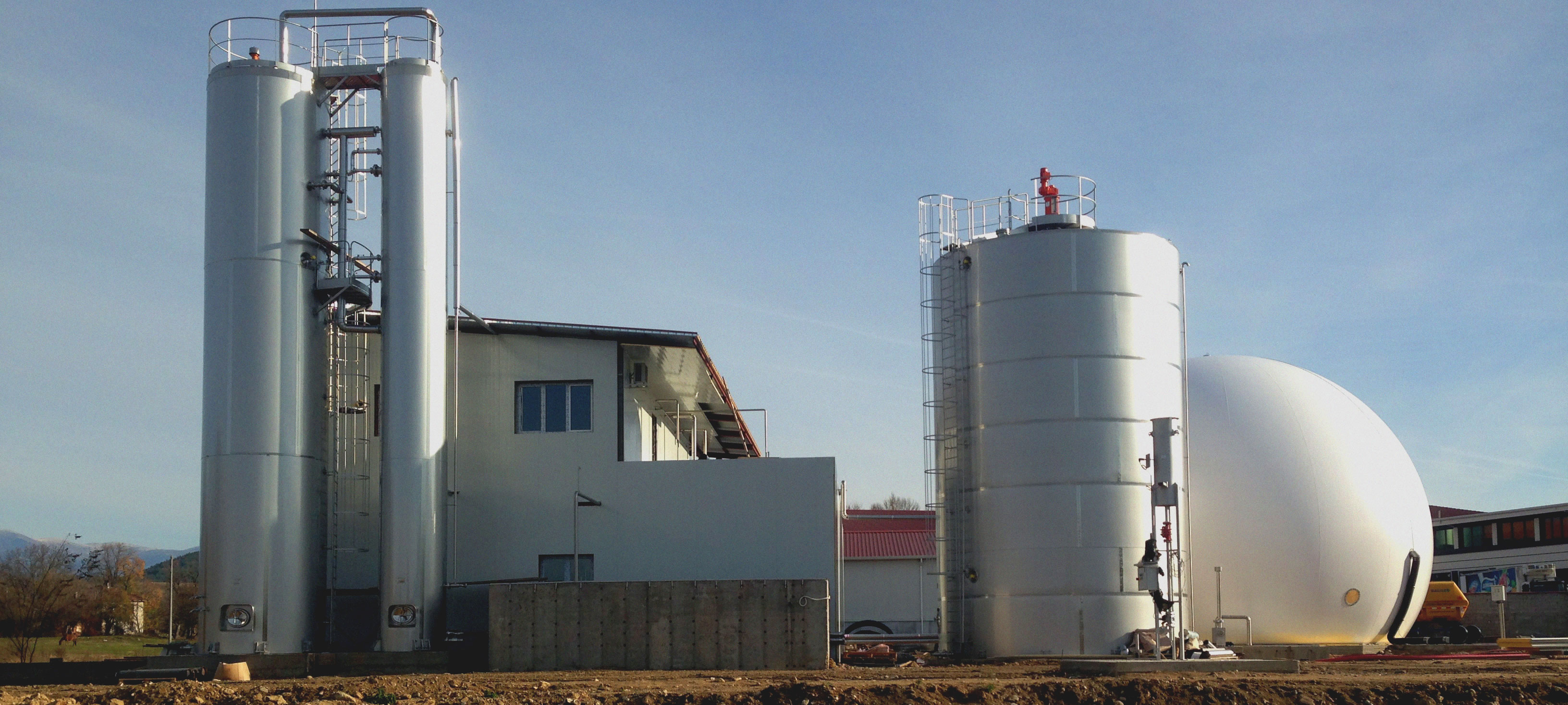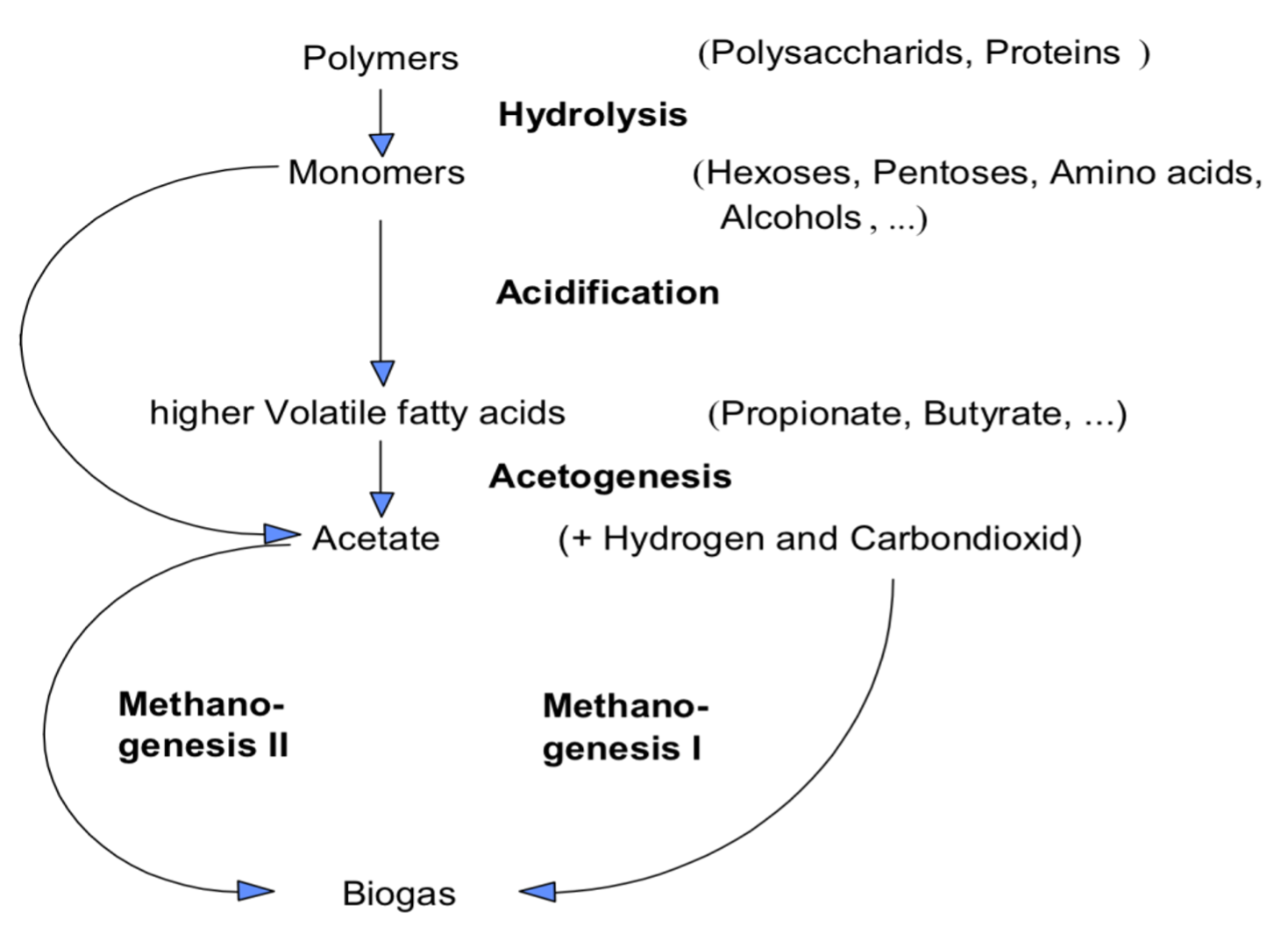Anaerobic wastewater treatment

Treatment of wastewater heavily contaminated with organic compounds.
Highly contaminated wastewater with organic compounds can only be effectively treated by anaerobic biological treatment. A conventional aerobic aeration stage alone does not have the capacity to treat high COD and BOD levels and could only be used in a reduced form as a second aftertreatment stage after an anaerobic bioreactor, with a treatment ratio of 9:1 In addition to the high purification efficiency, the biological anaerobic facility produces biogas with a methane (CH4) content of around 70%. This biogas could be integrated into production and increase the energy efficiency of the plant. Anaerobic treatment is carried out in ECSB and CSTR reactors.
Microbiology and biochemistry of anaerobic technology
Anaerobic wastewater treatment is a biological method characterized by the production of methane (CH4). The active microorganisms that belong to the group of anaerobic bacteria, i.e. bacteria that can or in most cases live only in an environment that excludes the presence of oxygen. In this context, methanogenic bacteria play a key role.
The process of anaerobic digestion of organic material occurs in steps (Fig. 1). Four steps can be outlined:
- Hydrolysis
- Oxidation
- Acetogenesis
- Methanogenesis
Each step is carried out by a different population of bacteria. The reactive product of one population is the substrate (food) for the next.

Hydrolysis and oxidation
Anaerobic digestion begins with the hydrolysis of large organic molecules (polymers) such as proteins and polysaccharides (starches), which are hydrolysed by exo-enzymes. Monomers are formed that are degradable by oxidizing bacteria (second step). These monomers are glucose, hexose, pentose (sugar), amino acids, alcohols, etc. In the second step, higher organic volatile acids such as acetate, propionate, butyrate, etc. are also formed. One of the possible oxidation reactions is that of the oxidation of glucose to acetose.
Glucose can be oxidized with simultaneous hydrogen production:
Reactions (1) and (2) show that COD glucose content is converted to COD acid content. Since there are no reduced carbon molecules to be evolved into gas, no purification is performed at this stage.
Acetogenesis
High-organic acids are transformed to acetate by acetogenic bacteria (third step). However, the energy production in this conversion is not sufficient for the reaction to proceed.
For example, the conversion of popionic acid
the free energy charge is positive. According to the laws of thermodynamics, the reaction can proceed only when the free energy has a negative charge. This can only occur in reaction (3) when the (partial) pressure of H2 e less than 10-3 - 10-4 bar.
By direct consumption of H2 the partial pressure will be kept low and the propionic acid is converted to acetic acid. In this case, propionate will accumulate in the cultures, which can cause problems.
Methanogenesis
Methanogens belong to a special group of bacteria, the archaebacteria. They are members of the anaerobic food chain whose metabolic activity prevents the sequestration of large amounts of organic material in anaerobic ecosystems. The above three groups of bacteria finally produce acetic acid and hydrogen. Excess hydrogen can be used by methanogenic bacteria to convert HCO3 to methane according to:
Popionic acid accumulation can be avoided if methanogenic and acetogenic bacteria are very closely related (symbiosis). Then the hydrogen that is produced by methanogenic and acetogenic bacteria can be used by methanogenic bacteria for conversion to methane. This is called interspecies hydrogen transfer and occurs according to:
In this reaction acetate is converted to biogas. This reaction produces about 70% of the biogas in the anaerobic process. Here COD is removed from the water along with methane.
